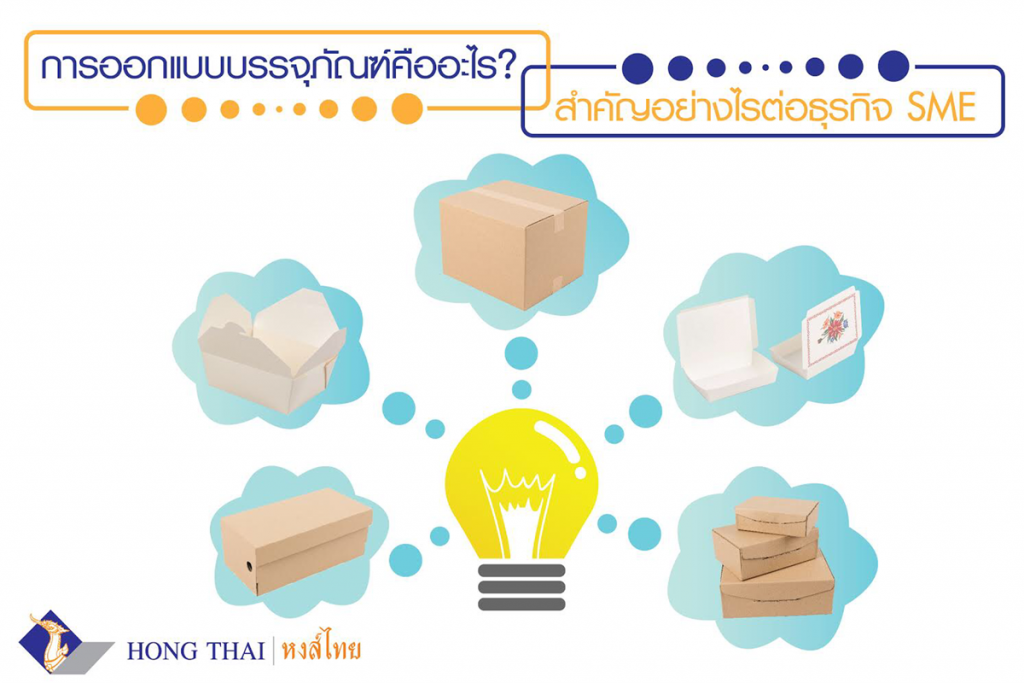Understanding the meaning of packaging design and the importance of packaging helps entrepreneurs or SME business owners utilize paper boxes, food boxes, paper cups, paper bowls, paper plates, or other forms of paper packaging to create interest in their products and brands.
What is Packaging Design?
Packaging design refers to the process of determining the form and structure of the packaging to ensure it is suitable and in harmony with the product, preventing damage during transportation, facilitating the transportation system, and adding psychological value to consumers. This requires both scientific and artistic creativity.
Objectives of Packaging Design
The goal is to use materials such as paper, cardboard, wood, plastic, glass, and other metals to design containers that are both aesthetically pleasing and durable, appropriately sized for the product. Examples include paper boxes, corrugated boxes, offset printed boxes, paper pallets, and other containers for use, while also creating a positive image for the brand, leading to customer satisfaction.
The Importance of Packaging for SME Businesses
Packaging for food and beverages, as well as for other consumer goods, plays a crucial role for SMEs in all aspects, as follows:
1. Protects product quality from contamination, such as dust, insects, human contact, moisture, heat, sunlight, and other impurities.
2. Facilitates storage. For example, large paper boxes allow goods to be stored together in one place or make transportation easier, allowing for quicker movement of products.
3. Supports marketing by enhancing the image of the product and brand, making it more recognized.
4. Functions as advertising and promotion for both the product and the brand by conveying information on the packaging, such as paper boxes or product boxes.
5. Creates a unique identity for the product, making it more appealing and memorable. Choosing distinctive, beautiful, and appropriate packaging that aligns with the product greatly influences purchasing decisions, even when the customer was not initially intending to buy.
6. The beauty and quality of the packaging adds value to the product, making it easier to determine the selling price.
Types of Packaging Commonly Used in SME Businesses
1. Paper bags – A versatile packaging option available in various sizes, used for a variety of products such as coffee bags, clothing bags, cosmetics bags, and small jewelry bags.
2. Corrugated boxes – Lightweight packaging commonly used for shipping, but can also be designed for retail product packaging.
3. Paper drums – Primarily used for shipping, typically for chemicals or plastic pellets.
4. Paper pouches – Used for small to medium-sized products. The size and type of paper pouch depend on the product being packaged.
5. Paper cans – Cylindrical packaging commonly used for snacks and confectionery.
The marketing competition in the SME business sector is just as fierce as in larger businesses. Therefore, developing packaging is a viable option. Designing paper boxes and other packaging, especially eco-friendly packaging that does not contribute to pollution and is biodegradable, can be a unique selling point that helps SMEs compete in the market.






